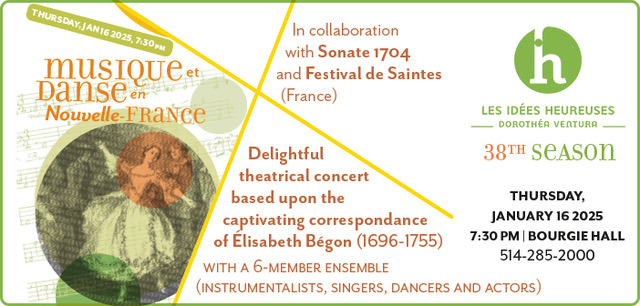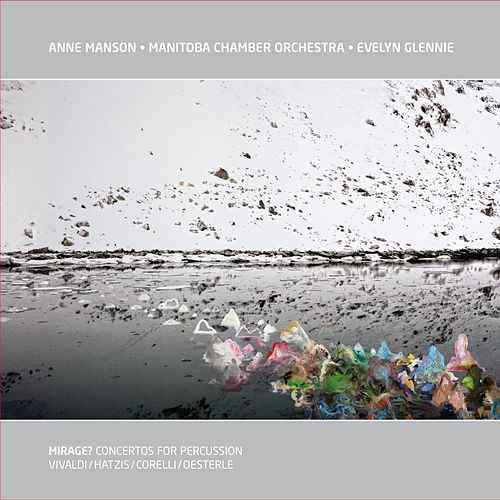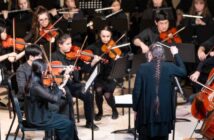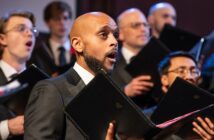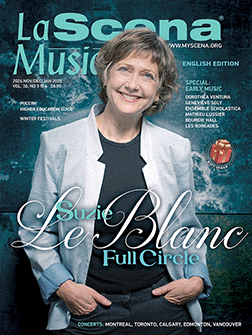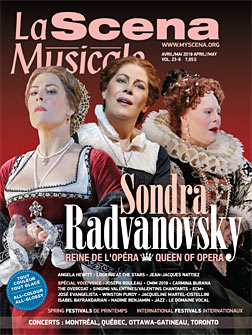
This page is also available in / Cette page est également disponible en:
![]() Francais (French)
Francais (French)
“The vision I had of ECM + 30 years ago has remained virtually intact,” says Véronique Lacroix, artistic director of the Ensemble contemporain de Montréal.
Lacroix directs the ensemble, which she founded in 1987 as a graduate of the Montreal Conservatoire, with the same ardour and the same philosophy.
“Our mandate was clear: to present multidisciplinary creations, to introduce today’s Canadian composers to the general public and to develop a specialist ensemble in contemporary music. It is still done verbatim, year after year.”
An admiration for the “total artwork” espoused by Wagner leads Véronique Lacroix towards multidisciplinarity as the guiding principle of the ECM +. Thinking about the concert in its entirety fascinates her, as does artistic convergence.
Every year she presents a multidisciplinary thematic concert that opens possibilities and allows music to transcend its usual framework. “Another art (dance, theater, painting, circus) gives an additional reference from which the listener can begin his listening.”
Tradition and modernity
Lacroix’s training at the Conservatoire led her to reject the traditional boundary between classical repertoire and contemporary music.
“I wanted to connect the two because I felt that in my own musical practice there was a strong link between tradition and the discovery of new languages. It seemed like the perfect starting point to tackle music never heard before.”
The beginnings of ECM + were modest. Halfway between a student and professional ensemble, the young conductor and her colleagues interpreted classics and works by the school’s composers. Their first concert featured Mozart’s Serenade in C Minor for wind octet and two new works with the same instrumentation.
“At the time, it was not really done,” Lacroix recalls. “The composer Gilles Tremblay, my analysis professor, confronted me for using an instrumentation which he considered obsolete. I told him that if Mozart had managed to do something with such a set, why wouldn’t a composer of today be able to?”
The artistic director has admired composers since she was a teenager. When a colleague suggested that she organize workshops to give composers a period of research and exploration before the final delivery of their works, she knew that she had just found the second angle of her ensemble. “I said to myself: here is the logical continuation of my quest where the rational speech of the left brain responds to the creativity of the right.”
Generation
This is how the Generation project took shape in 1994. Its goal was to provide a springboard and an experimental laboratory for young Canadian composers. Every two years, four composers are selected by a Canadian jury from over 70 applications received.
During the first year, ECM + organized workshops open to the public where composers could hear, explore and test ideas before finalizing the writing of their work. “The public has access to everything in the minds of composers,” Lacroix explains.
The second year was devoted to a major Canadian ECM + tour with the four composers and their completed works.
“This became a networking opportunity for launching the national careers of composers in their early thirties,” Lacroix says. Indeed, the tour is also a competition where composers can win the National Jury Prize ($5,000 and a work order) or the National Public Prize ($1,500). “A biennial rallying point for young Canadian composers,” is how Lacroix describes it.
The workshops are not forgotten in the concert. The composer, in an interview on stage, presents certain musical elements that the ensemble plays. “It allows the audience to reconstruct the puzzle,” the conductor explains. “This notion of communicating to the general public the mystery of creation, I have it deeply anchored in me.”
The audience first
Reaching the public is at the heart of Véronique Lacroix’s decision-making. “I have always wanted to invite the general public to connect with new music,” she says. “If it is sometimes demanding to listen to, it can also be a vital source of inspiration that appeals to what is most vibrant in us.”
ECM + works hard to bring its audience together. The industrious communications team leaves nothing to chance.
“We create trailers for each production,” Lacroix says. “We do not neglect marketing. We spend a lot of energy to promote a discipline that is unfortunately little known, but also – let us say it – too often unloved. We do everything we can to ensure that productions are seen and heard and presented at their best.”
The ensemble offers a wide range of programming, including concerts in which young performers in whom Lacroix sees a particular potential are honored. There are also unique ensemble concerts of flutes, since Lacroix is, after all, a flutist. “I like this instrument, which, with its open mouth and metal body, offers a lot of modern possibilities.”
Forward
After 30 years of creation and innovation, Véronique Lacroix is still passionate about her work.
“I know my job, I have established a beautiful network, I’m still in my prime,” she exclaims with sparkling eyes.
The future? The Hockey Noir graphic opera in Canada and Europe. A 10th tour of the Generation project. The resumption of the major show Stylus Phantasticus as part of a CAM tour. A new CD of instrumental and vocal music by Ana Sokolović.
“And preserving what we have built,” Lacroix adds humbly.
Translation by Viviane Reid
This page is also available in / Cette page est également disponible en:
![]() Francais (French)
Francais (French)


